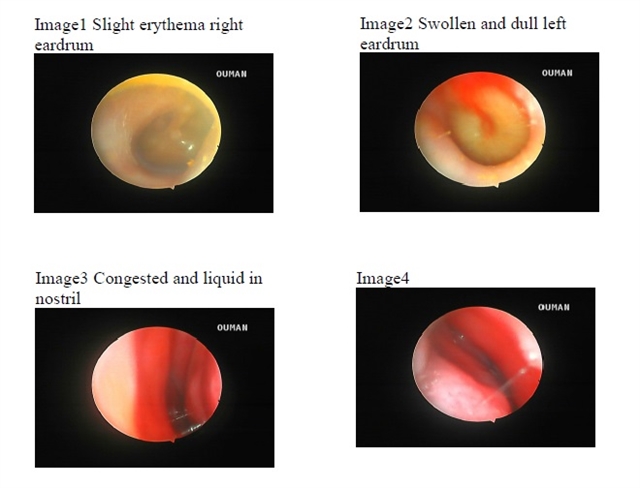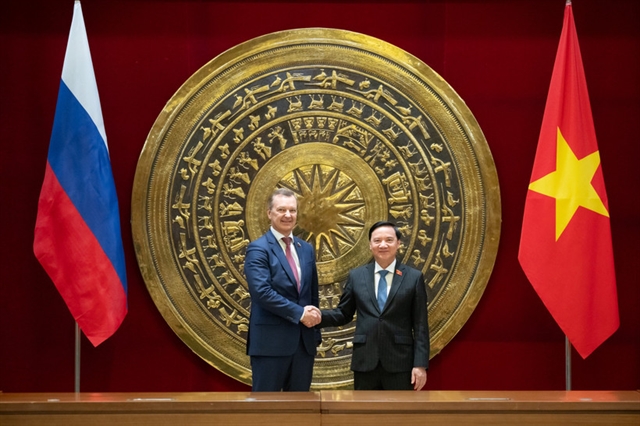 Life & Style
Life & Style

Dr Nguyễn Thị Minh Tâm*
Otitis media is an inflammation of the middle ear membrane and is among the most common diseases in preschool children, usually in winter and spring. It is closely related to rhinopharyngitis.
Understanding the connection between rhinopharyngitis and otitis media is essential, as some forms of otitis media are often overlooked, potentially leading to hearing loss or dangerous complications.

|
| Rhinopharyngitis and otitis media are interconnected, with nasal and middle ear inflammation often occurring together in children. Photo courtesy of Family Medical Practice |
Why are rhinopharyngitis and otitis media closely linked?
The link between rhinopharyngitis and otitis media lies in the Eustachian tube, which connects the ear and the nose. This tube has three functions:
Ventilating the Tympanic cavity to keep balance the pressure of the middle ear outside;
Draining and cleaning secretion from middle ear into the throat;
Protecting middle ear from sound pressure and fluid from the nose and throat refluxing into the ear.
The main cause of otitis media in children is dysfunction of the Eustachian tube. This tube in children is shorter and more horizontal than that of adults and is not yet fully functional, so all nose and throat infection, especially adenoiditis and tonsilitis can easily cause dysfunction of the tube, leading to otitis media.
In addition, risk factors such as allergy, congenital defects of the nose and throat (cleft palate ...), malnutrition, premature birth, pollution environments (dust, smoke,..), cold humid weather,.. all increase the risk of rhinopharyngitis and otitis media. The epidemiological characteristics of rhinopharyngitis and otitis media are similar. The pathogen can be bacteria or virus, and up to 80 per cent due to viruses.
Recognising the symptoms
Understanding the cause and the pathogenesis of the disease can help parents better care for and monitor their children's health.
While many parents become concerned when their child complains of ear pain or has ear discharge, they often overlook persistent runny noses - assuming it’s normal in children, without realising rhinopharyngitis is the cause, and otitis media is just the consequence.
There are several types of otitis media. Most people associate it with pus discharge or perforated eardrum. However, Otitis media with effusion (OME) progresses quietly, often without visible symptoms. It can lead to serious complications like hearing loss. Because symptoms are subtle, young children may not be able to express their discomfort.
Common symptoms of otitis media:
It often follows an episode of nasopharyngitis;
Recurring fever, sniveling, loss of appetite, diarrhea ...;
In infants: touching or pulling at the ear, head shaking, crying, poor sleep (ear tube is dysfunctional while lying so the pain increases), temperament changes (absent- minded, irritable, less sociable,…);
In older children: complains of tinnitus, dizziness, hearing loss, earache;
Possible ear discharge (if eardrum is perforated);
On examination: the tympanic membrane may appear red, thick, bulging, or opaque; sometimes pus in the ear canal.

|
| Dr Nguyễn Thị Minh Tâm. Photo courtesy of Family Medical Practice |
Treatment principles
Successful treatment of rhinopharyngitis and otitis media requires addressing both nasal and ear conditions. A combined approach using medical and, if necessary, surgical methods is recommended.
Medical treatment
General treatment:
Antibiotics for bacterial infections or antivirals for virus infections;
Antihistamines, anti-inflammatories, pain relievers, fever reducers;
Vitamins, proper nutrition, immunity boosters.
Topical treatments:
Nasal spray (use decongestants first, then clean with saline water);
Ear drops.
Important notes:
Do not use hydrogen peroxide in the ear;
Blow one nostril at a time (not both together);
Blow the nose after using decongestant spray;
Warm solutions before using.
Surgical treatment
Puncture tympanic membrane to drain pus if it is bulging;
Placement of a ventilation tube;
Adenoidectomy and tonsillectomy if obstructed;
Other ear surgeries depending on the damage of tympanic membrane (retracted grade IV or collapse, glue ear,…).
Important notes:
Surgery is usually considered six months of unsuccessful medical treatment;
Combining adenoidectomy with ventilation tube insertion is often necessary to resolve Eustachian tube dysfunction.
Prevention
For disease prevention otitis media, keeping children from getting rhinopharyngitis is a decisive factor.
Keep the environment smoke- and dust- free;
Keep warm when the weather changes;
Vaccinate fully;
Seek early treatment for any signs of rhinopharyngitis;
Avoid swimming if the eardrum is perforated;
Follow medical advice and monitor behavioral changes such as lack of concentration, slow communication, or temperament changes - all signs that may indicate hearing loss.
Rhinopharyngitis and otitis media are common diseases in children, and with early and proper treatment, they can be managed effectively to avoid complications.
The dysfunction of the Eustachian tube is the main cause of otitis media, and both rhinopharyngitis and vegetation adenoids are major factors contributing to this dysfunction. This means that rhinopharyngitis and otitis media are very closely related.
To achieve good and stable treatment outcomes, it is essential to treat both the ears and the nasopharyngitis area simultaneously. Family Medical Practice
*Dr Nguyễn Thị Minh Tâm is an ENT Specialist with over 20 years of experience in the field. She holds a bachelor’s in General Medical Practice and a master’s in ENT from Hanoi Medical University. Tâm has completed numerous training courses with Australian experts, focusing on Audiology, and taken part in many courses in other ENT-related fields.
FMP Healthcare Group operates medical centres in major cities including HCM City, Hà Nội, and Đà Nẵng, offering consultations with international doctors, check-up centres, and emergency ambulance services.
Visit FMP Hanoi 24/7 at 298I Kim Mã Street, Ba Đình Ward, Hà Nội.
To book an appointment, please call us at (024).3843.0784, or contact us via WhatsApp, Viber or Zalo on +84.944.43.1919 or email hanoi@vietnammedicalpractice.com.




